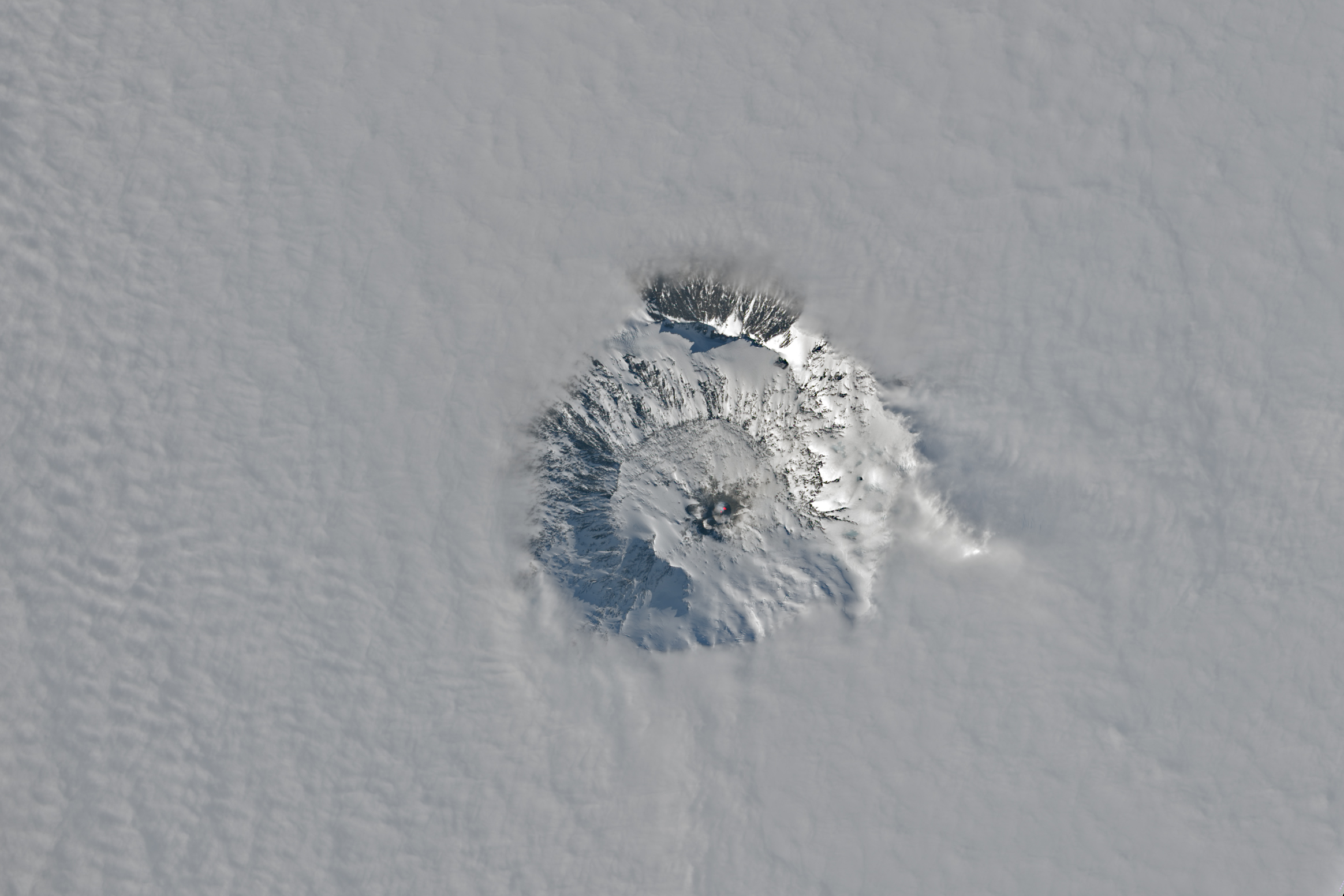Mount Erebus is the highest active volcano in Antarctica, and the southernmost active volcano on Earth. It has a constant lava lake in its main caldera. Mount Erebus is a stratovolcano, the same type of volcano as Mount St. Helens. The lava lake in the summit crater counts as an ongoing eruption but it is not a particularly active eruption. The fact that the volcano is composed of layers of lava and ash erupted mainly from the summit means that it does erupt in a bigger way, it is just that no humans have seen it happen yet.
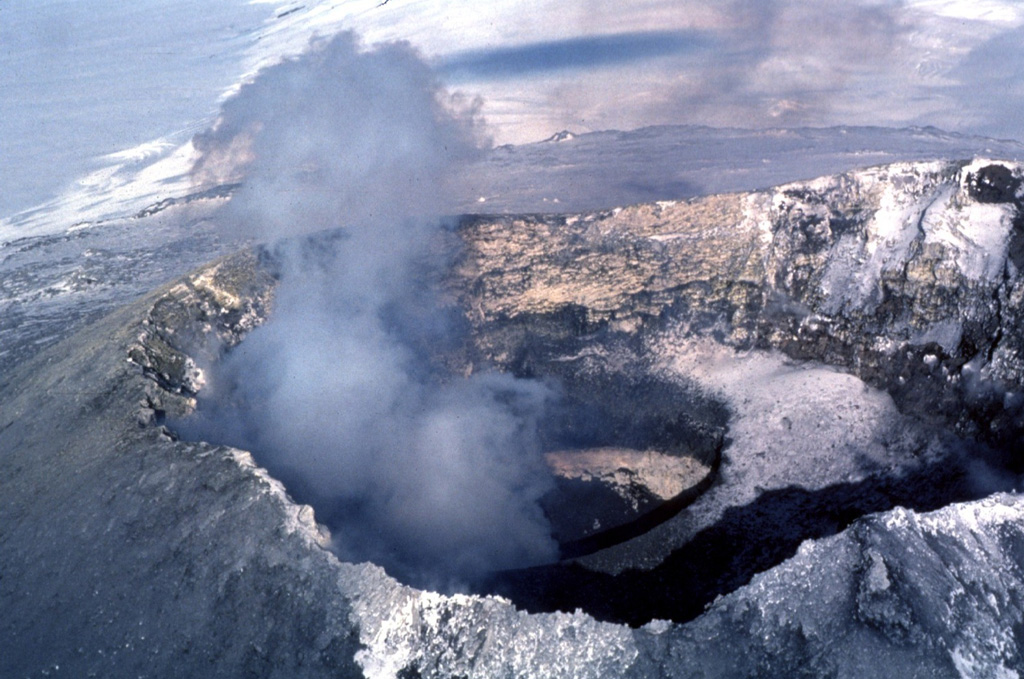
A gas plume rises above the active lava lake at the summit of Erebus. Lava lake activity and intermittent Strombolian eruptions have been observed during annual scientific expeditions since then. The lava is located at the bottom of an inner crater, whose snow-covered rim forms a bench at the right side of the Main Crater.
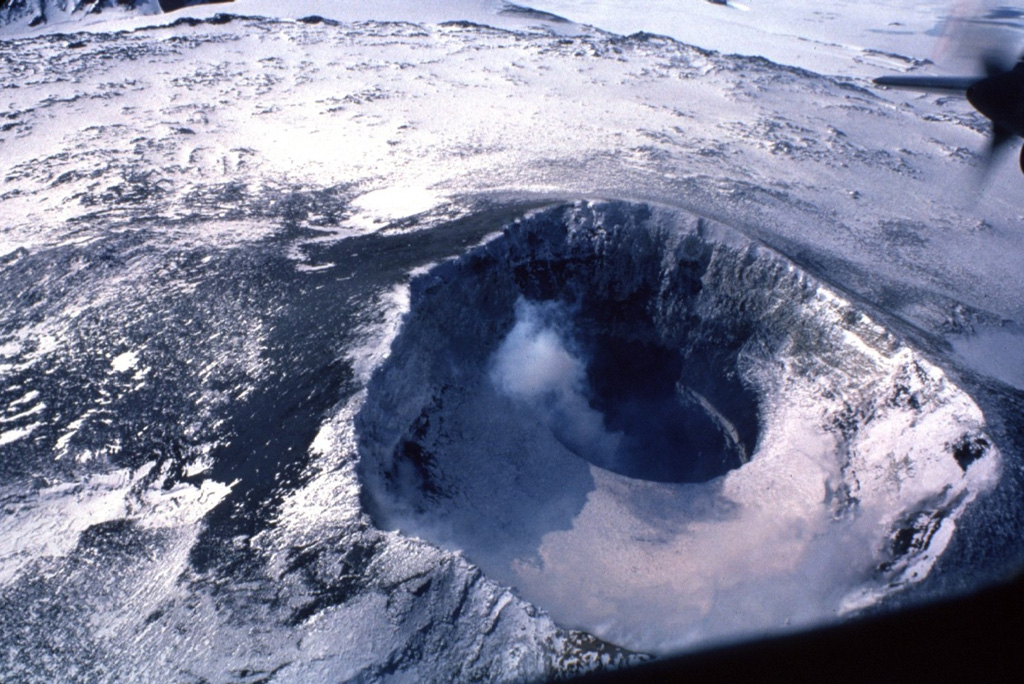
The summit of Antarctica’s Mount Erebus is the world’s southernmost active volcano. It contains an elliptical crater whose NE side contains a 100-m-deep inner crater. The flat, snow-covered floor of the Main Crater is about 100 m below its rim. A plume rises from the inner crater that has contained an active lava lake since 1972.
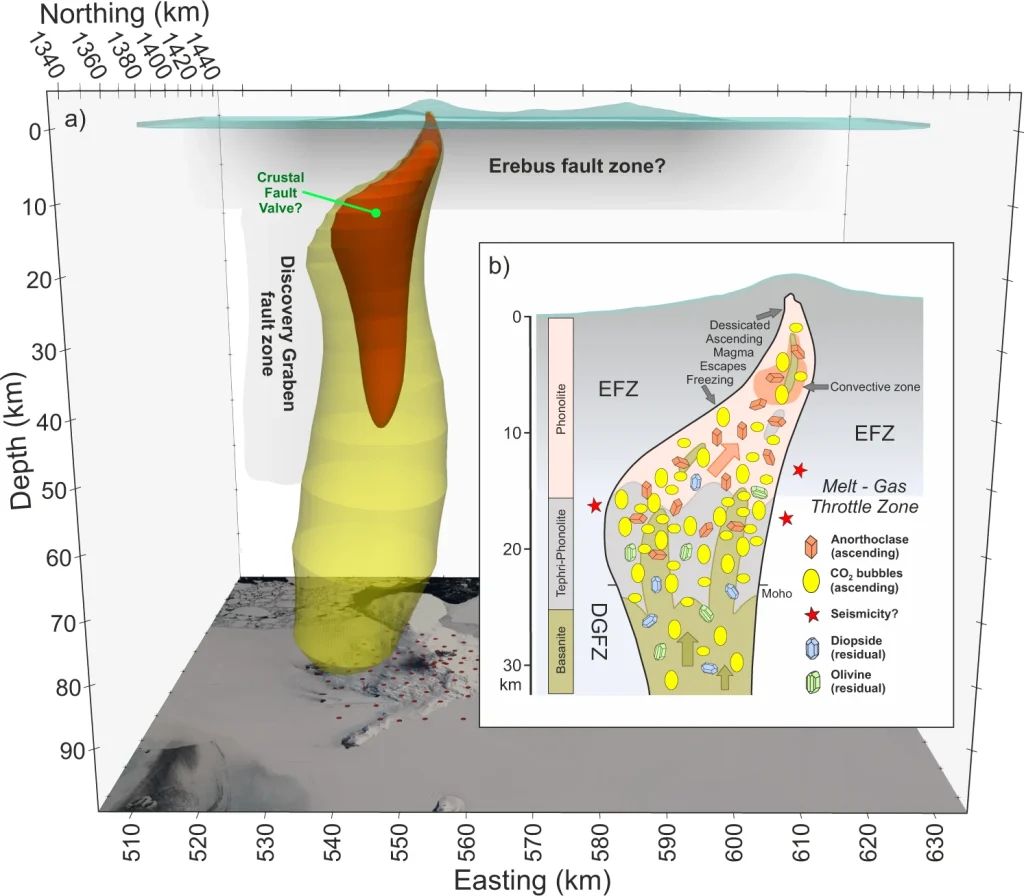
A study published in the journal of Nature explored the geology and volcanic activity below the crater.
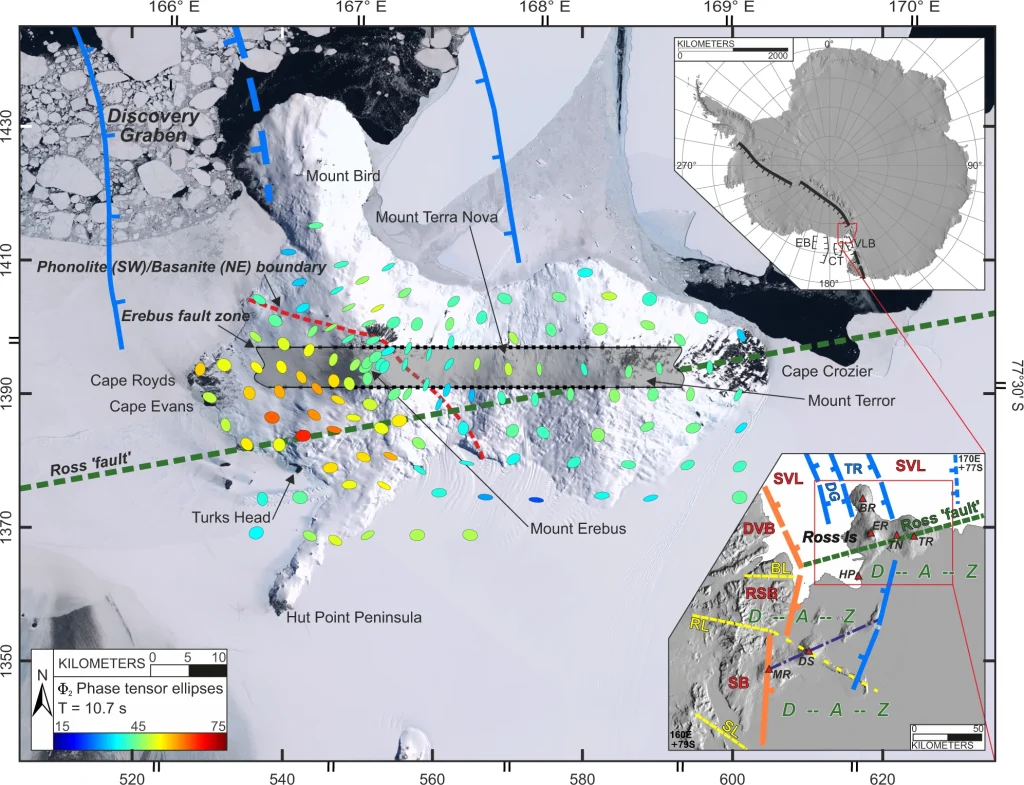
While predicting an eruption is difficult on all volcanoes, Erebus poses additional challenges because of its remote and hostile environment.
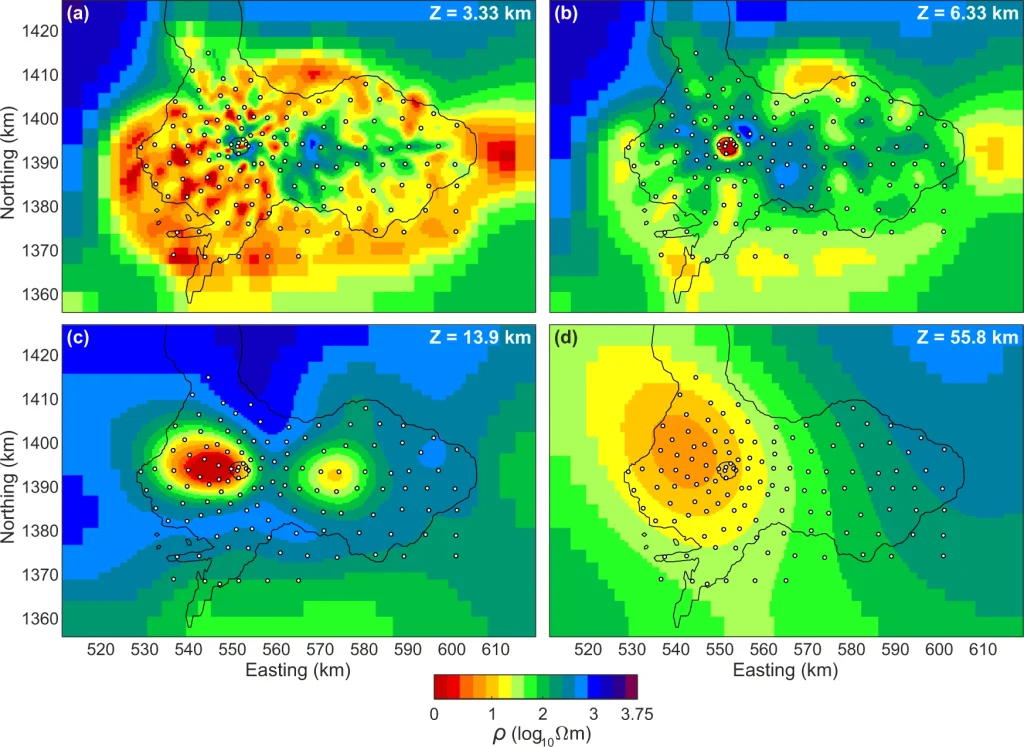
Magnetic imaging helps scientists understand what lies beneath the crater.
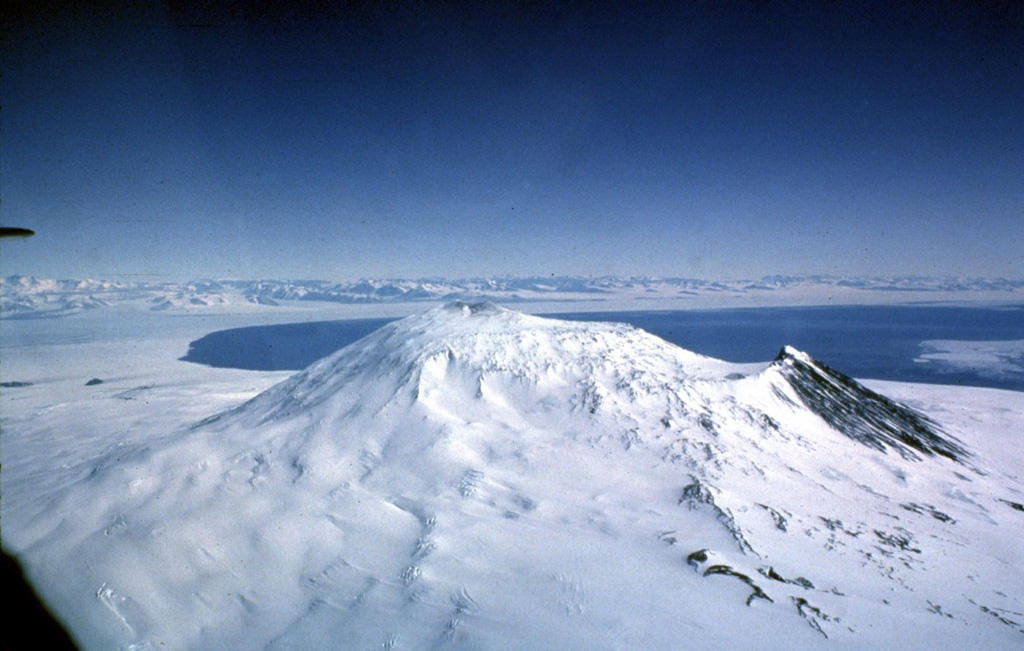
Mount Erebus viewed from the SE. The water of the Ross Sea and the mountains of Victoria Land can be seen in the distance. Fang Ridge is above the snow-free slope on the NE side (dark colored section on the right side). The plateau right of the summit is the lava flow-filled floor of the summit caldera, inside which the active summit cone was constructed.
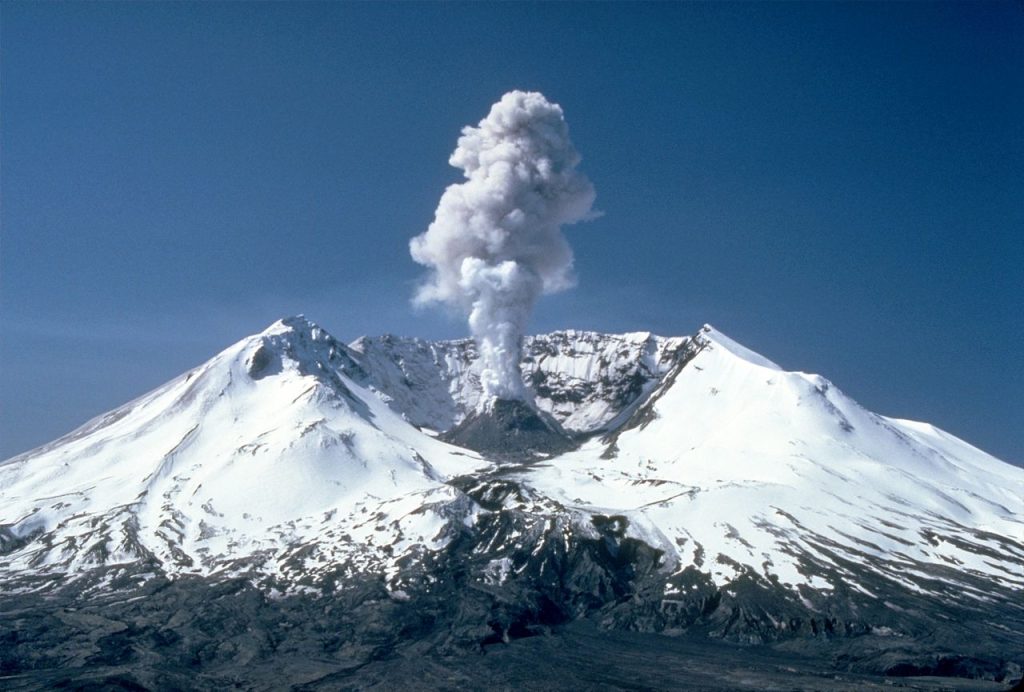
Plumes of steam, gas, and ash often occurred at Mount St. Helens after its eruption. A similar event could happen to Mount Erebus but no indicators show it is imminent.
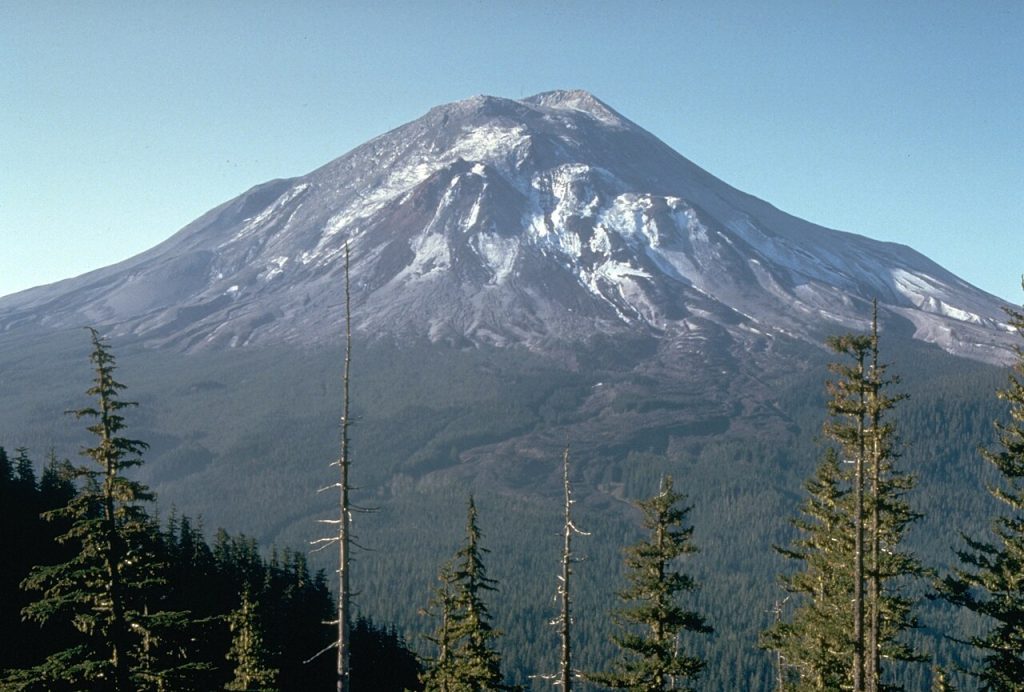
Plumes of steam, gas, and ash often occurred at Mount St. Helens after its eruption. A similar event could happen to Mount Photo of Mount Saint Helens before eruption. A similar eruption of Erebus could have devastating effects on the glaciers in and around Erebus potentially increasing the melt rate drastically from current predictions. Scientists will have to carefully monitor the status of Erebus, although prevention is not within their means, prediction could help save lives of the nearby observatatory.t Erebus but no indicators show it is imminent.

